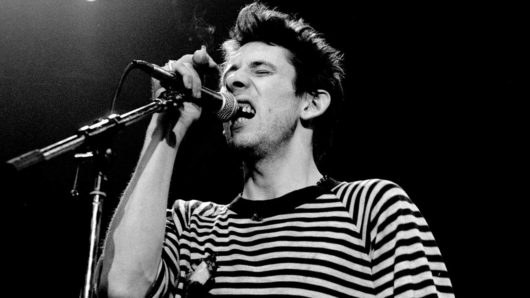Guitarist and songwriter Graham Coxon was one of Blur’s chief sonic architects, his instantly recognisable playing style roughing-up the group’s sound and ensuring that, no matter how radio-ready a song was, it smuggled some art-rock subversion into the mainstream in the 90s, establishing Blur as Britpop figureheads in the process. In his new book, Verse, Chorus, Monster!, Coxon writes openly about his creative process and his struggles with fame, and how addiction and a subsequent regime of self-care have returned him not only to himself, but to a legion of fans who have continued to support him as a solo artist. Here are ten things we learned from reading Verse, Chorus, Monster!
Listen to the best of Blur, here, and check out our 10 ‘Verse, Chorus, Monster!’ takeaways, below.
1: The “Battle Of Britpop” was a manufactured rivalry
After Blur’s breakthrough album, Parklife, beat Oasis’ Definitely Maybe to win the 1995 BRIT Award for British Album Of The Year, the media – and Oasis’ Noel and Liam Gallagher – were keen to stoke further competition between the two groups. When, in the summer of 1996, it became clear that Blur’s song Country House, the lead single from their The Great Escape album, would be released on the same day as Oasis’ Roll With It, the “Battle Of Britpop” had begun: “the media pounced on the idea of a race to the top of the charts”, Graham Coxon writes in Verse, Chorus, Monster! But, according to the Blur guitarist, things weren’t quite as they seemed.
“Much of the rivalry was framed in terms of class,” Coxon observes. “Oasis were seen as genuine, rough-diamond examples of the working-class North, while Blur were cast as Southern, arty-farty, pretentious gits.” But though he admits to his group’s “arty-farty” leanings, Coxon emphasis that “the description conveniently glossed over several fairly important facts”, including his own childhood as an army kid – “not middle-class by any stretch of the imagination” – amid other privations.
“At the time I felt, ‘What’s the point in manufacturing this rivalry? We’re all from England and we’ve won the war on grunge. Let’s just flipping enjoy being British bands who are doing well.’”
(Oh, and Country House made it to No.1, and it still stands as Blur’s best-selling single.)




